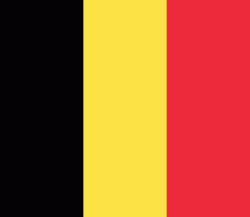Arrondissement of Waremme (Arrondissement de Waremme)
The Arrondissement of Waremme (Arrondissement de Waremme; Arrondissement Borgworm) is one of the four administrative arrondissements in the Walloon province of Liège, Belgium. Its size is 389.86 km2 and its population on 1 January 2015 was 78,851 people.
The Arrondissement is only an administrative one. Judicially its communes depend on the Arrondissement of Liège except for Braives, Hannut, Lincent, Saint-Georges-sur-Meuse, and Wasseiges who depend on Huy.
The Waremme administrative district was created in 1821 by joining the cantons of Avennes and Landen (taken from Huy) and the canton of Waremme (taken from Liège).
During the final fixing of the linguistic border in 1963, the communes of Attenhoven, Eliksem, Laar, Landen, Neerhespen, Neerlanden, Neerwinden, Overhespen, Overwinden, Rumsdorp, Wamont, Walsbets, Houtain-l'Évêque, Wange, and Wezeren were assigned to the Arrondissement of Leuven. The commune of Corswarem and part of Montenaken were assigned to the Arrondissement of Hasselt, and the commune of Otrange to the Arrondissement of Tongeren.
In 1965, the communes of Roloux and Voroux-Goreux were transferred from the Arrondissement of Liège.
In 1971, the communes of Borlez and Les Waleffes were transferred from Huy.
In 1977, the commune of Aineffe was transferred from Huy and there were exchanges of territory with the Arrondissement of Liège.
The Administrative Arrondissement of Waremme consists of the following communes and sections:
The Arrondissement is only an administrative one. Judicially its communes depend on the Arrondissement of Liège except for Braives, Hannut, Lincent, Saint-Georges-sur-Meuse, and Wasseiges who depend on Huy.
The Waremme administrative district was created in 1821 by joining the cantons of Avennes and Landen (taken from Huy) and the canton of Waremme (taken from Liège).
During the final fixing of the linguistic border in 1963, the communes of Attenhoven, Eliksem, Laar, Landen, Neerhespen, Neerlanden, Neerwinden, Overhespen, Overwinden, Rumsdorp, Wamont, Walsbets, Houtain-l'Évêque, Wange, and Wezeren were assigned to the Arrondissement of Leuven. The commune of Corswarem and part of Montenaken were assigned to the Arrondissement of Hasselt, and the commune of Otrange to the Arrondissement of Tongeren.
In 1965, the communes of Roloux and Voroux-Goreux were transferred from the Arrondissement of Liège.
In 1971, the communes of Borlez and Les Waleffes were transferred from Huy.
In 1977, the commune of Aineffe was transferred from Huy and there were exchanges of territory with the Arrondissement of Liège.
The Administrative Arrondissement of Waremme consists of the following communes and sections:
Map - Arrondissement of Waremme (Arrondissement de Waremme)
Map
Country - Belgium
 |
 |
| Flag of Belgium | |
Belgium is a sovereign state and a federal constitutional monarchy with a parliamentary system. Its institutional organization is complex and is structured on both regional and linguistic grounds. It is divided into three highly autonomous regions: the Flemish Region (Flanders) in the north, the Walloon Region (Wallonia) in the south, and the Brussels-Capital Region. Brussels is the smallest and most densely populated region, as well as the richest region in terms of GDP per capita. Belgium is also home to two main linguistic communities: the Flemish Community, which constitutes about 60 percent of the population, and the French Community, which constitutes about 40 percent of the population. A small German-speaking Community, numbering around one percent, exists in the East Cantons. The Brussels-Capital Region is officially bilingual in French and Dutch, although French is the dominant language.
Currency / Language
| ISO | Currency | Symbol | Significant figures |
|---|---|---|---|
| EUR | Euro | € | 2 |
| ISO | Language |
|---|---|
| NL | Dutch language |
| FR | French language |
| DE | German language |




















